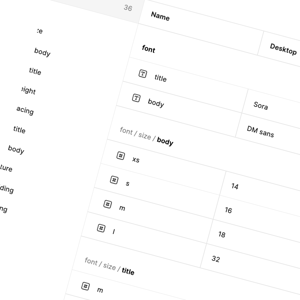
As the digital world becomes increasingly app-centric, ensuring the safety of your applications is paramount. High profile cases reach the news, but with millions of attacks every month, even a small scale breach can be devastating for the users – and businesses – involved.
Understanding Mobile App Security
Mobile app security refers to the protective measures implemented in mobile applications to protect them from malware, data breaches, and other cyber attacks.
It involves a combination of robust, secure code, secure communication, data encryption, and more.
Securing an application against potential threats is a multi-faceted process that requires proactive and reactive strategies.
Security considerations should be incorporated from day 1 of development, rather than solely an end-of-project check, so that best practices can be baked in.
This means the team can improve quality of code and minimise security flaws before pushing the app to deployment and production.
What counts as secure?
The non-profit OWASP Foundation, in its mission to enhance software security, publishes the Mobile Security Testing Guide (MSTG) and Mobile Application Security Verification Standard (MASVS).
These resources equip software engineers and architects to design secure mobile apps and enable test analysts to effectively validate an app's security status.
Their detailed documentation can also be a useful resource for those who are managing the development process, and want to ensure they can create accountability for the team working on the security approach.
The standard covers several aspects of an app’s architecture – and potential attack surfaces:
-
- Secure storage of sensitive data on a device (data-at-rest).
- Cryptographic functionality used to protect sensitive data.
- Authentication and authorization mechanisms used by the mobile app.
- Secure network communication between the mobile app and remote endpoints (data-in-transit).
- Secure interaction with the underlying mobile platform and other installed apps.
- Security best practices for data processing and keeping the app up-to-date.
- Resilience to reverse engineering and tampering attempts.

Holistic Mobile Security
For a fortified security posture, developers should be integrating these best practices:
Consistent security scanning
Identify vulnerabilities early by making security testing central in your development process.
Integrate from the outset
Incorporate security testing from the development's inception, making security assessments a part of your CI/CD process – from day 1.
Stay up-to-date with releases
Regularly refresh your security scanning tools and vulnerability reference list to combat evolving security threats.
Train the team
Organisations such as OWASP produce comprehensive guidance, and easy to reference checklists to help keep security top of mind.
Automate security scanning
Use a scanning tool that can detect vulnerabilities, from data disclosure to insecure communication.
Include reverse engineering
This offers insights into the app's inner mechanisms, enabling better vulnerability assessment.
Consider Certificate Pinning
Certificate pinning is an enhanced security technique where developers select which certificates their app trusts, ensuring secure app-server communication. This method eliminates unauthorised access and potential data breaches.
Harness static and dynamic analysis
Use both techniques for a thorough security check.
Dynamic analysis - Examines an app's runtime behaviour, identifying hidden anomalies.
Static analysis - Reviews the app's source code, binary structure, and configuration files to detect potential threats.
Use a tool to automate security activities
While the resources provided by organisations like OWASP is comprehensive, the process of testing manually is painstaking (OWASP’s ‘iOS Basic Security Testing’ page alone is close to 9000 words).
At Shout we love MobSF – it’s open source, can provide static and dynamic analysis, and covers Android, iOS and Windows apps.
MobSF: A Comprehensive Mobile Security Tool
MobSF is our preferred testing tool, and although there are others, we prefer this one for its blend of features and ability to integrate with our test and deploy processes.

MobSF (or Mobile Security Framework,) is an open-source security testing tool, specifically for mobile apps. The powerful toolkit empowers developers to fortify their apps against potential vulnerabilities.
The all-in-one solution allows pen-testing, malware analysis and security assessment across allows Android, iOS and Windows. It's designed to support the OWASP MSTG standard, and offers both static and dynamic analysis.
Open-source utilities like Androguard, MobSF API, and Radare2 underpin MobSF's architecture, facilitating varied security analysis techniques.
This framework aids developers and security professionals in identifying vulnerabilities and assessing potential risks, contributing to the fortified resilience of mobile apps amidst growing cybersecurity challenges.
At the heart of MobSF is its ability to automate complex aspects of mobile application security testing. This transforms what could have been an intricate process, and saves hours of time in testing.
Concluding Thoughts on Modern App Security
In today's dynamic threat landscape, securing your app necessitates more than one tool or strategy.
It demands an ensemble of techniques and tools that adapt to shifting challenges, and cover a range of attack surfaces.
By combining best practice with a practical toolkit, and building in security testing at the earliest stages of the development lifecycle, your app's security isn't just a veneer. It's a resilient shield, ensuring user trust and data integrity.























